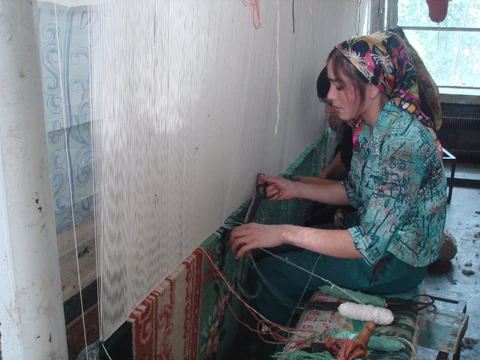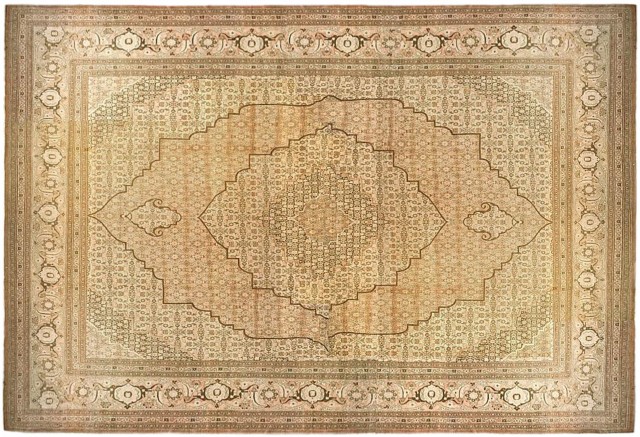Are antique rugs expensive?
When contemplating the purchase of an antique rug, the most frequent question is: “Why are antique rugs so costly?” This article explores factors contributing to the perceived high cost of rugs.
This question is typically posed by those new to the world of antique rugs or those beginning to appreciate this captivating art form. It’s a crucial question as it reveals a common perception of antique rugs, often viewed for their basic utilitarian function rather than their artistic value. Handmade rugs, particularly antique ones, transcend mere decorative items. They are the culmination of countless hours of labor, embodying masterful artistry and centuries-old traditions. Let’s examine some factors influencing rug prices and assess if rugs are indeed expensive.
Let’s take a look at some of the factors that influence the price of rugs and you will come to the conclusion that antique rugs are not expensive.
What determines the value of a rug?
The value of a rug is determined by several factors. The first consideration is that handmade rugs significantly differ from machine-made ones. Each handmade rug is a unique work of art, even if the artist employs time-honored designs and techniques. Human hands tie each knot, dye and spin the wool, silk, and cotton that constitute the rug. This process elevates the rug beyond a mere fabric piece, making it an extension of the designer’s and artist’s persona.
One common factor determining a rug’s value is knot density, or the number of knots per square centimeter. While rugs with a higher knot count take longer to produce, the knot count is crucial for another reason. A high knot count allows the designer to create a rug with a more intricate level of detail than a rug with a lower knot count. This can be likened to viewing a high-definition screen with a greater number of pixels per centimeter compared to a composition with a lower pixel density. Similarly, a high knot count on a rug enables the artist to produce a broader range of artistic expression, tones, and details in their design or geometric figures, facilitating the creation of designs unachievable with lower knot counts.
In addition to the knot count, the rug’s pattern, design innovation, colors used, and the designer’s artistic recognition are factors considered when evaluating the piece’s value. Another consideration is the rug’s age. While not always the case, antique rugs tend to be rarer and, consequently, more valuable. The use of organic materials such as wool, cotton, and silk, along with natural dyes derived from plants and animals, results in a product that, while preservable, will deteriorate over time. This means that many of these stunning historical rugs will eventually disappear, further augmenting their value.
What is involved in the making of antique rugs?
The creation of antique rugs involves a significant investment of time and effort, contributing to their perceived high cost. Even when viewed purely for their utilitarian function, many of these rugs are arguably underpriced. A small, high-quality rug measuring 1 x 1.5 m can take several months to weave, involving 7 to 8 hours of daily knot-tying. This doesn’t account for the time spent caring for sheep, cultivating cotton, waiting for silkworms to produce silk, or the laborious process of spinning wool or other fibers and dyeing them.
While some of these processes have been mechanized recently, many traditions still perform this work manually. It takes approximately 7 to 8 hours of work to produce one hour of weaving. Larger rugs take even longer to create, with some palace-sized rugs taking up to three years or more to complete.
A large size rug takes even longer to produce, with some of the palatial size rugs taking one to three years, if not longer, to complete. In many cases, especially at the time of antique rug production, there were no weekends off and the work of weaving these rugs took all day, every day, and sometimes 24 hours a day.
In many instances, especially during the production of antique rugs, there were no days off, and weaving these rugs was an all-day, everyday task, sometimes even around the clock. The fastest rug weavers can produce about six knots per minute or 360 knots per hour, but such skilled weavers are rare. On average, a room-sized rug of 2.70 x 3.60 m, having 500 knots per square centimeter, requires 4 to 5 weavers working 6 hours per day for six days per week and takes about 14 months to complete. That’s over 12,000 hours of work to produce a medium-quality rug. It doesn’t consider the work time of the sheepherders, the spinners, and the dyers. Typically, the price doesn’t cover the labor and materials spent weaving the rug.
In contrast, a rug-making machine has 1,200 needles and can make about 3,600 tufts per minute. Manufacturers who use machines can produce hundreds of square meters of rug daily. This is one reason why modern synthetic carpets made by machine are much cheaper than those made by hand, but they lack the human touch and individual artistry.

Each rug is a masterpiece
A beautiful Persian or Caucasian rug can be compared to a work produced by famous artists. Rugs from world-renowned masters like Mohtashem, Haji Jalili, and Aboul Ghasem Kermani are as significant in the world of carpets as the works of famous painters like Matisse, Picasso, and Van Gogh.
Art lovers readily pay millions of dollars for a Matisse but find it odd that a few thousand are charged for an antique rug made by a renowned rug artist. Weaving a carpet means that the artist must define a design and remain committed to it for an extended period, sometimes years. Moreover, many of them spent decades learning this art before developing their method and style. A rug is one of the most essential items you can buy for your home. The perfect carpet sets the tone of the design and can bring elegance and coziness to your home. Purchasing an antique rug is buying a work of art.

A rug is one of the most important items you can buy for your home. The perfect rug sets the tone for the design and can add elegance and warmth to your home. Buying an antique rug is buying a work of art. Now that you are able to appreciate the effort that goes into producing these works of art, you will see that it makes no sense to think that you pay a lot for an antique rug.
Now that you can appreciate the effort in producing these works of art, you will see that it makes no sense to think you pay too much for an antique rug. Search the carpets and appreciate the beautiful masterpieces we have in our collection. A handmade rug is an investment that will last your entire life and beyond. You will find the perfect work of art that needs to be added to complete the design of your home.

Figalli Oriental Rugs
We do not sell rugs. We bring rare works of art to your home in the form of rugs.
Our services
You are Protected
Copyright © 2023 Figalli Oriental Rugs, All rights reserved. Desenvolvido por Agência DLB – Agência de Marketing Digital em Porto Alegre
